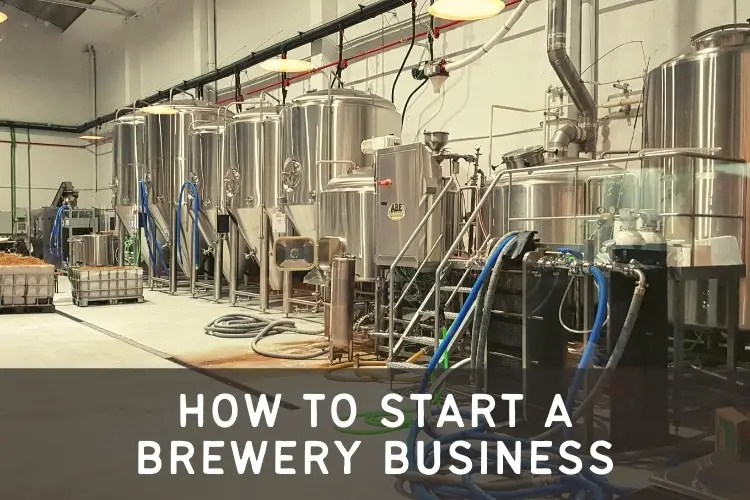I had the good fortune to brew professionally for 10 years, founding 2 breweries in Asheville, NC: Green Man and French Broad Brewing Company. They were founded in 1997 and 2001 respectively. I grew them both from stripped brick and sheetrock walls, from the concrete slab up.
Beer is the love in life, even above the ol’ ball and chain, I mean second only to the loving wife. There is the dream. I can do this for a living. I could brew beer all the time and make money. And that is the beginning and end of life as we knew it.
Building a brewery is a noble, arduous pursuit, and a long road. Plan, gather resources, find allies, secure funding, and execute. As the result of carefully planned steps mixed with sheer will-power, the brewery will manifest.
If financing is secure this is simply an exercise in organization. If partially secure, you have enough ammo for banks and would-be investors to listen. If money is hard to come by, you must fight and scrap for everything you get. One discovers the true nature and depth of determination.
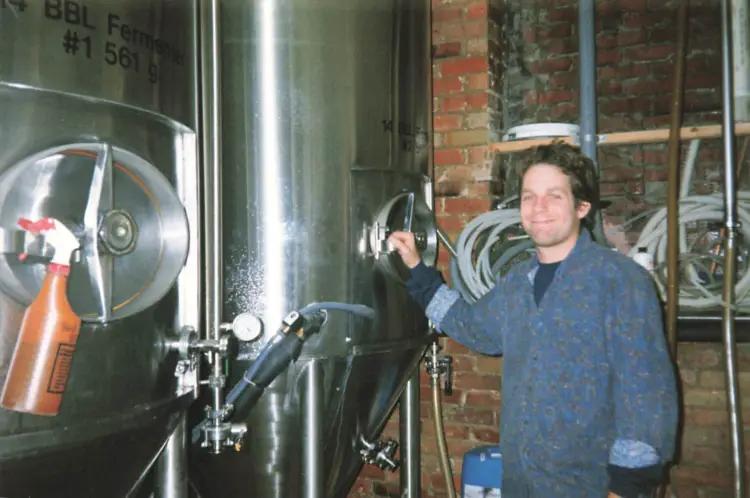
How Long Does It Take To Open a Brewery?
If money is no object, 2-3 months and you can be in business. If on a budget, personally involved in the project to save money, anticipate 4-6 months. Either way, it depends on the level of your debt and how long you can carry it without receivables.
There are over 7,000 breweries in the US now. Arguably not the best time to open a brewery. This is called hyper-competition. Last I heard, my old haunt Asheville, NC, had 29+ breweries including 3 craft macro-breweries. When I started out, we had 3.
Undaunted, good, read on. So why brewing?:
- Seasoned life-long homebrewer
- Sounds cool
- To make money
- Money to burn
- Unquenchable passion for beer
- Pursue an artisanal craft and bring vitality to the community
- Got a wild hair
Truth is, it doesn’t matter. If the decision is made, begin the process, thoughtfully and deliberately. Setbacks and problems will arise. It is normal. Keep your eyes on the prize.
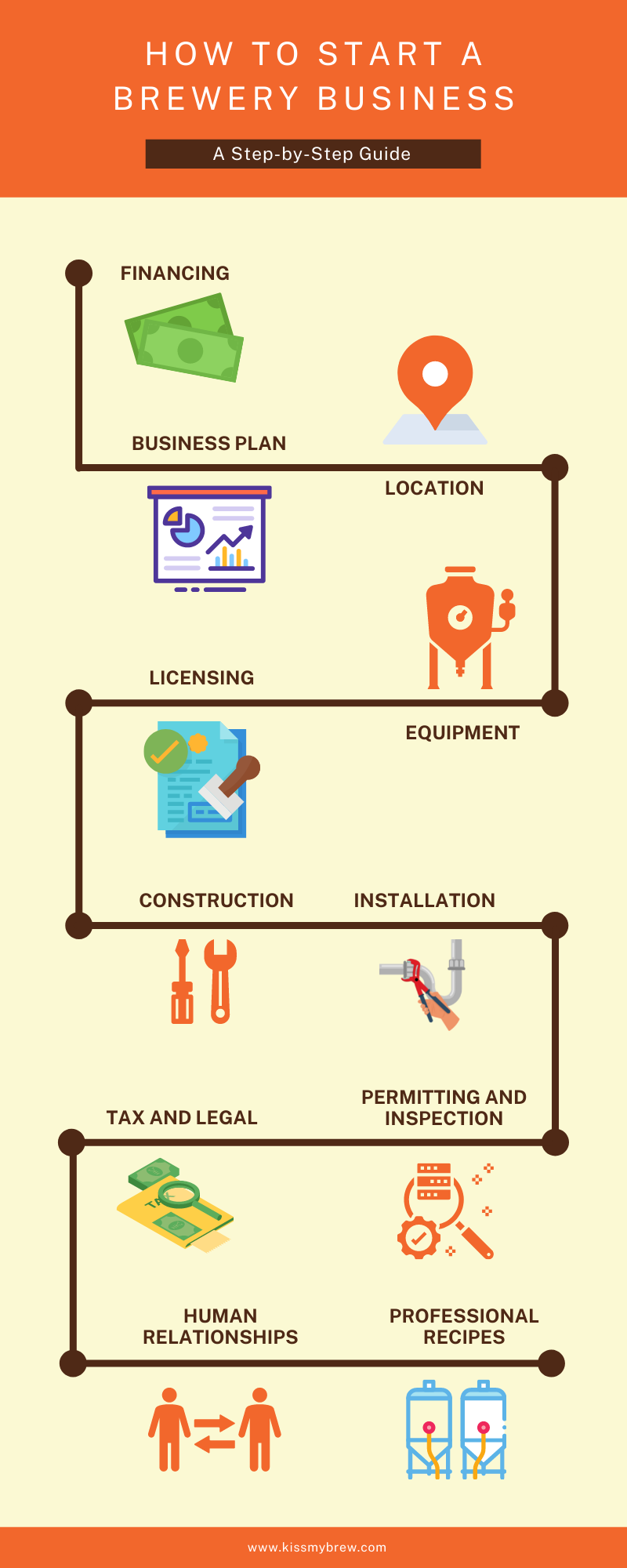
Financing
This is where the rubber meets the road. Regardless of desire and ambition, the money must manifest. If you are well-financed already through family, savings, or investments, super! The hard part is done.
Brewery set-ups run the gamut, from nano to large micro facilities. Let’s assume for a moment we are building a small plant, driven by a tap room and retail sales. (as allowed by local Statutes!)
A nano brewery with an attached retail tasting room: $50,000 – $100,000.
A larger, 7 – 15 bbl. brewery, with attached tasting room: $150,000 – $250,000
These are ballpark estimates as there are 50 states, thousands of county and municipal regulations as to what is allowed from zoning, labor, business organization and operations themselves.
If you haven’t a big bankroll in hand, please see the article….with multiple real-world field tested options.
Other reads:
Business plan
I cannot emphasize enough how important this is. I was an artisan brewer and got into professional brewing for the love of it. This was the late 90’s in which America topped out at just over 2,000 breweries, and was already in decline. We thought, there couldn’t possibly be more.
Anyway, my first business plan was about 6-7 pages. My last one which I wrote while finishing my MBA was 43 pages.
You cannot plan too much. There are metrics by which we measure everything, namely production, management, sales, and marketing. They must be considered and organized in agonizing detail. This is not just for the investors or the bank, it is for the success of the business. It is to mitigate risk, taking into account every little thing that may go wrong or right.
Other reads:
- Brewery Business Plan Example (PDF)
- Professional Brewing Consulting Services in case you need the help of a Professional Brewer (me) for your Business Plan
Location
This has a dual meaning. There must be a suitable facility and if it is to have a retail space then it must be a location where people will want to come and enjoy beer. The place must be well vented to the outside, have 3-phase electrical power, and be zoned commercial or mixed-use property.
The lease or mortgage has to be affordable. Regardless of your product, plan, or financing, the rent must be to scale. Rent is a fixed cost and becomes an asset as production ramps up. If it constantly strains you, then find another place.
If building a retail space like a brewpub, café, or taproom there are three rules encoded in the common cultural psyche:
- Location
- Location
- Location
We’ve heard it said before until it is a cliché, yet people still ignore it. If the business is dependent on retail sales, it must be accessible, and not simply a destination business, no matter how trendy or niche. There must be a certain amount of drive-bys.
There are exceptions. One is the town of Asheville, NC, which over the last 10 years has become the East Coast beer hub and in constant contention for national top spot. People will go on pub crawls and seek out any and all the taprooms, the more obscure and unique the better. That was our culture. It has its profound beauty and toxic dirty under belly, a good thing or bad, depending on how you look at it.
Equipment
There are four choices to pro brewers:
- New commercial
- Used commercial
- Repurposed dairy, locally fabricated, and industrial vessels
- A combination of any or all.
Choose the best you can within your budget. Buy from someone you know or trust. Equipment dealers can be fantastic people and they can be used car salesmen, tin men, or Snake-Oil sellers. I was a third-generation tin man apprentice at the tender age of 13 so know of what I speak. Customer service and reliable functional equipment is key.
There are systems where you press buttons and control everything from a computer touchpad. There are others where everything is done by hand, the only mechanical activities are the centripetal pumps which move the beer or the compressors that chill the walk-in.
Again, a mixture of both is nice. I recommend having elements of hands-on processes with the beer. If you can’t see it, touch it, and learn it by feel and experience, especially the fuck-ups, it will be a long road to Master Brewer.
Tanks are nearly all made overseas
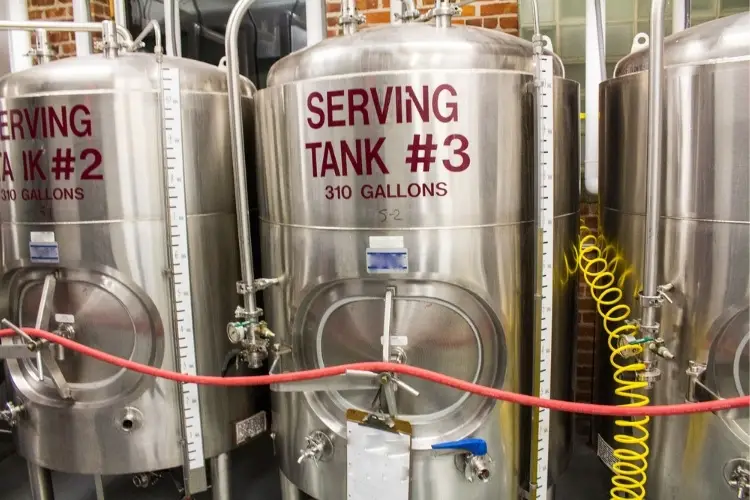
Most tanks are made in China now, though this may have changed a bit with the tariff wars and political posturing these last couple of years. I live in Asia, have lived in China, and first visited with my friend Jim in 2005. The West, who made all the equipment in the 80’s and 90’s have farmed it all out because they cannot compete with labor costs. A Chinese worker even today makes $1-2 an hour and some can live a decent life from it, some not.
Allow me to be crystal clear. The Chinese are perfectly capable of fabricating excellent brewing equipment. AND, you must go to the factory and personally physically inspect every weld, inside and out of each and every tank ordered. If your supplier does not do this, it is a crapshoot and risks are huge. Some good friends of mine ordered some tanks from a guy who talked a good game, a really nice guy. They arrived, 4 tanks, maybe 15 bbls. each, pretty small. And one of them when they tipped it up on its feet, got a crack in the wall. A six inch fissure a couple mm wide. Not in the weld mind you, but the steel itself.
When steel heats up and cools down rapidly, which is always the case with beer tanks, it expands and contracts. Little cracks become big ones.
The place to order equipment
Order it anywhere you want, whatever you can afford. If you are buying new there is one place only I recommend, and yes, I’ve known them personally since 1999. I value loyalty, and these fellows do as well. That’s how I roll.
That is Applied Beverage Tanks – ABT out of Chicago, Illinois. I first met them when they sourced my 2nd used system for French Broad at a bargain, helped me pack it, waived the expenses for our weekend romp in NYC, and we’ve had a strong personal and professional relationship ever since. They took me to China in 2005. I was Tank #3, 4 and 5 that they ever fabricated out of China.
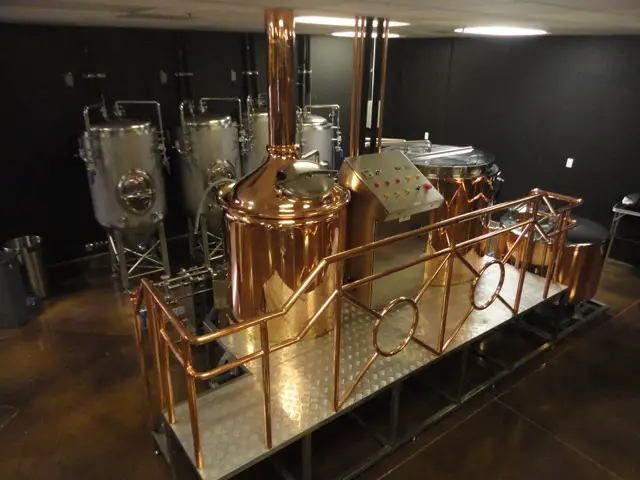
If not for them, I would not have worked in China, then emigrated to Taiwan and have the family and career I have now. Thank you, Jim and Alan!
You can’t beat their prices and they are the only business I know of that gives you the name of every single customer they’ve ever had as a reference. And to this day, 16 years later, Jim or his personally trained and hand selected agent climbs in every single tank and inspects every single weld.
In the early days, Jim and the factory staff had some screaming matches, mostly on Jim’s part. It stemmed from the fact that he wanted it done right.
Several hundreds of tanks and customers in at least 20 countries later, when you write, tell them Jonas sent you.
Buyer’s code: JONAS@KMB, Applied Beverage Tanks.
Licensing
The Feds
Your new best buddy will be the ATF inspector – yes, Alcohol, Tobacco, and Firearms. I had two inspectors in my time. Had they been dogs the first would have been a Doberman, while the second was a Spaniel or Lab. No disrespect to either, just defer to them and comply with every request.
With firearms and terrorism being in part of our ongoing national dialogue, brewers are seen as largely harmless now. It will be much easier to deal with them than in the past.
The form is long, 20-30 pages, so be thorough. Pay attention to detail up front and there won’t be hassles later.
In the elder days, an ATF permit- the federal license approval to manufacture alcohol- took 3-6 months. These days the turn around is much shorter but I will not be tricked into giving you an exact time!
The State
State employees get a bad rap. For me, they were absolutely great. In North Carolina, minor paperwork took not more than 2-3 days and even my State Alcohol Inspector- I forget the exact department acronym- was an exceptionally friendly fellow. His name was Sam and was a Syrian American. I recall his interesting surname which I’ve forgotten. Also, my Great-Grandma, Heloise Rose Karajian was an Armenian Syrian, from Aleppo, born 1896. All the troubles there in recent years, I’ve thought about Sam and hoped his family was OK.
Aside from the Alcohol application, all of my state licensing came back in a matter of a few days. This was my state and may not have been yours. I recommend calling after a few days to make sure they have received your paperwork. Politeness and kindness went a long way in my state. I can’t speak for others.
Construction
There are two primary options: to hire a general contractor or act as the general contractor yourself. Hiring one can be expensive as he works for a profit and may or may not strictly adhere to your budget despite their best intentions.
Should I hire a contractor for the brewery?
If you can afford one, they should have ready access to designers, architects, and relationships with local building inspectors. This can streamline and speed up the process. It will cost you for this access.
The following fees are estimates, inclusive to the overall budget.
| Ballpark estimates for Contractor fees | Nano .5 – 3bbl. | Small 7 – 15 bbl. |
| Contractor non-Union | $75,000 x .25 = $18,750 | $200,000 x .25 = $50,000 |
| Self-contracting | $75,000 x .15 = $11,250 | $200,000 x .25 = $30,000 |
| Union Contracting | $75,000 x .35 = $26,250 or more | $200,000 x .35 = $70,000 or more |
Contractor Costs
I am a broken record, and it depends. If you want hands off, take the higher of the estimated numbers listed in the Financing section. If you are heavily involved or decide to run the site yourself, it could be the low end of the price range.
Do be assured, the contractor will make money every time he or his people set foot on the property, and a commission on materials and equipment.
Costs vary and one huge factor is whether labor unions operate in your area.
When things go wrong and you are under contract, you pay your way out, not them.
One possible way to save money if you have skills is to work for the contractor as labor, skilled or semi-skilled and may recoup some money in this way.
Remember their job is to build the facility and make a profit. They will sub-contract all the mechanical work, electrical, gas, plumbing and HVAC and may tack on a surcharge. They are the boss. Not sure what to tell you here, but once they get started, like a battlefield, things change. Change means money.
Can I be my own brewery contractor?
If you have people skills, organization, and trade skills, you may run the job yourself. You will perhaps save money. On the other hand, it will take more time, as you will not necessarily have a crew.
If you have no experience in construction, I do not recommend this route.
If operating the project on a tight budget there will be a lot of on-again, off-again work, and 1 – 2 people can only get so much done, that is assuming you and a helper or two.
As mentioned, I was brought into the tin trade (exterior home improvement) at a young age and witnessed a variety of things.
Later, as a carpenter I saw many small and medium size projects built from the bottom up, or gutted hull to the finished facility. I had an idea in my head how to do it and trade skills of my own. I’d met inspectors and seen things done. Without influence with local people, tradesmen, city inspectors and plan approval offices, things can move slowly. I had people skills, not always good but interesting and dynamic. Never be afraid to ask questions and keep asking until you find the person that gives the correct answer. Either way, there are options.
Permitting and Inspection
There must be a building permit. Within this is permission to alter the facility to your needs. One may submit plans themselves, but they must be drawn and signed off on by a licensed architect. You are free to flip through the Yellow Pages to find one – yes, I know the Yellow pages don’t exist anymore. Ask friends, colleagues and acquaintances, get a recommendation as possible.
City Planning Review always has questions so take the architect or engineer with you to answer them.
Again, if you hire someone to do this, you needn’t worry, and the dollar column keeps ticking, in increments of Ben Franklins. Stay on the reviewer’s good side, build a relationship with them and they will help you problem solve.
Antagonize them and they can keep your plans on the bottom of the pile for as long as they please. Civil servants or not, this is a relationship business, so be prepared for that.
Installation
Carpentry and General Building
Sheetrock, drop ceilings, framing (wood or steel), floor coverings, build-out of the bar: this is all the easy stuff. Be crystal clear what the building codes are and follow them. For example, if the place is adjacent to another space, you frame sheetrock and paint a dividing wall with a 1-hour fire rating, then call for an inspection, to move on to the next stage of the construction. The chief building inspector comes in and says this isn’t a 2-hour firewall. It must have steel studs and double layered sheetrock and he red-cards you.
Congratulations, you just wasted a week of your time and $3,000, as an example.
Had you paid attention and had a partner or helper with whom you continually discuss, this mistake would not be made.
Also to keep in mind are labor unions. I lived in a Right to Work state. Yes, this is literally the name of the labor regulation. It means we are Union Free and bosses can fire you without notice at any time whatsoever. Such is the invisible hand of the market being administered by state legislatures throughout America over the last 40 years.
Plumbing
No unions can be a good thing. For example, I hired the plumbers at both of my breweries, Green Man and French Broad. I paid in cash, anywhere from $40 – 75 an hour for a three man crew.
My breweries were small. The first was 750 square feet and the second 3100 square feet. My bill still ran into the thousands, maybe 3K on the first and 6K on the second. VERY CHEAP. I talked to my good friend Jim Krejcie, who operates out of Chicago, and has been in the biz since 1992. He says a unionized plumber in Chicago would have cost me 20 grand at French Broad, the bigger of the two. And if Union labor didn’t do it, the work could not be done.
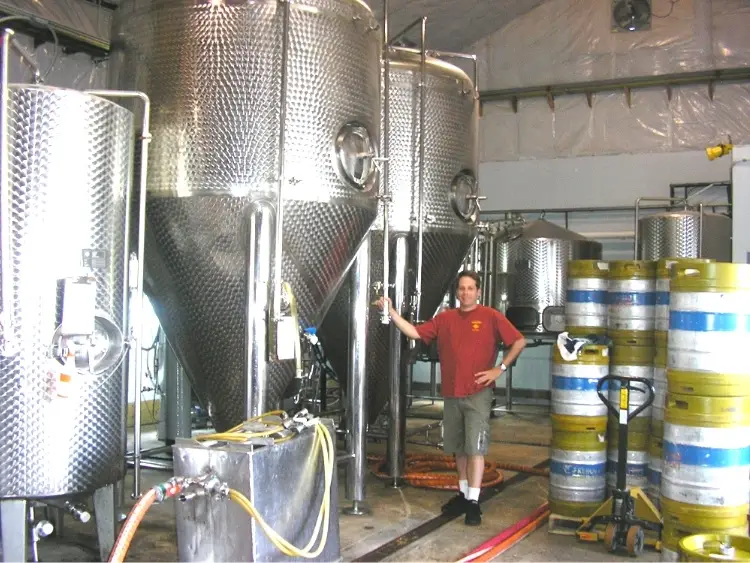
Now I heard of a guy who hired plumbers to pull a permit to install copper for water, low-pressure steam, as well as PVC drainage lines. They did the drains and ran about 200 feet of copper. He paid them and all was well.
The next week he and a friend went into the construction site and ran an additional 1500 feet of copper themselves. It cost him the cost of parts. His friend was there for fun.
He told me when the plumbing inspector came in and looked at the work, he said, “That’s some purty work right there!” THOUSANDS of $$$ saved. Find your workarounds.
Electrical
You want nothing to do with panel install, that is bringing the juice into the building. It’s dangerous stuff. However, you may find a small independent electrical contractor that will hire you or work by the hour.
Running conduit, pulling wires, wiring outlets and control panels is all semi-skilled labor, or a quickly acquired skill. My electricians earned from $40 – $75 an hour for a 1 – 2 man crew. This is cheap, a fraction of union labor. And if you can help out it speeds up the work. I learned a lot but forgot most of it, but a little refresher course and I could install temperature control panels for fermentation once again.
HVAC and Gas
This stuff is pretty serious, and I didn’t put my hands on it. Gas will often need threaded steel pipes and a boiler install, all tricky business.
HVAC takes gas, freon or other refrigerants, silver solder and specialty tools. I did assemble my own walk-in cooler, bought second hand from an old Grocery Store and the door and 2 corners salvaged out of an overgrown salvage field. I hung the evaporators.
There is a glycol cooling system for your tanks and the piping is usually CPVC a Grey/ Black piping that glues together. Provided you have a good relationship with your HVAC guy, it is very easy to assemble. Once again, the inspector may come in and say, “That’s somethin’ better ‘n nice, right there!”
The details that pull it all together – Legal and Taxes
Along with the excitement of big steel tanks rolling in and a long construction project nearing completion, there are “t”s to cross and “i”s to dot.
Three people you need on your team: a lawyer, a banker, and an accountant.
The lawyer will help with incorporation and various legal issues. The banker, even if not your main source of capital, will be vital for future growth. The accountant will make sense of your books, usually on a quarterly basis. Corporate books are not kept like a personal household.
All three of these individuals will help you stay inside the guard rails of the law.
Taxes
There will be interminable taxes to pay. Excise (alcohol production) tax paid to the state and feds. Payroll taxes quarterly are a challenge. There will be city and county taxes, mild by comparison. Do NOT fall behind on taxes, for ANY reason.
Insurance
Should there be employees, Workman’s Comp is mandatory. Do not choose the cheapest. They may default on payment if an accident occurs, and then you are left holding the bag.
You will need liability and operations insurance for your plant. One winter, I was on a long weekend up to New York to see a football game. There was a fire in my electrical panel. I remember it was around Thanksgiving.
It shorted the panel, all my temp controllers (for the tanks, walk-in, and chillers) went out, my computers, and nearly anything that had electricity was fried due to the surge. They paid cash for all, in full. My years of premiums paid off. Find a company that has a special brewery package.
Brand Registration and Alcohol Testing
All new products must be registered with the state. It is a simple form and the fee is modest if any. There are labelling rules to follow, most are straight forward.
Some states require you to have each product tested for alcohol. If so, this may take a little extra time. You must get the certified results at an approved lab, then include this in the registration paperwork. All in all, this process will take from 10 – 21 days. Plan ahead.
Human Relationships

This section will be brief and not the least important. Your human relationships in the business will foster or constrict your growth. If you are not a people person, stay in the brewery or office and have your partner be the voice of the company.
Vendors
These are the most critical as the supply chain of the plant. Malt, Hops, Yeast, and Chemicals will be your primary people. Try to get Net 30 (payment due in 30 days) terms with each of them. This will allow you a cushion to operate.
IF you have a good relationship with them and do encounter trouble, they will work with you. There were several times I over-ordered on raw materials inventory, or an expected distributor check did not arrive, and I had to call the supplier and explain why I didn’t send the check. They will value you as much as you value them.
Customers
Retail, wholesale or both, these are the people that make it all come together. The plant may produce outstanding beer. Selling it is another game altogether and the competition is fierce. If you are an artisan brewer, pure and true, find a partner for sales that will go out and take it on the chin everyday. Some people are naturally bullet-proof.
If you are the brewer and the beer is your art, rejection is hard to take, it becomes personal.
Partners, Employees, and Helpers
As a whole, the brewery crew must be a team. It’s that simple. There are numerous metrics by which one measures processes, outputs, revenue, and success. The primary factor underlying all is the strength and efficacy of the team. Without it, all the money, measurements and numbers will come to naught.
Some people you will know, some you will seek out, and some will naturally come to you. Be patient. Lastly, be clear about your mission and make sure the whole team is clear as to what that mission is.
Final Inspections
One by one, phases of the project draw to a close. There is a general sequence:
Each time a city/ county inspector comes, they will leave a yellow card if the work passes, and a red card if it does not. If a red card is received, no more additional work can be done on that aspect of the job until the problem is corrected. They will return within 24 hours of a call if not the same day. Here, your relationship is important.
Once all the mechanical inspections are done, call for the final building inspection. The chief inspector will examine all the inspection cards (there could easily be 6 – 12 of them). If he is pleased, he will issue a Green card, and that means all is right with the world and the plant is free to operate.
Do I need to have my brewing equipment welding and glycol system inspected?
As a rule, NO. They are considered closed-systems and not connected to public utilities of any sort: gas, water, electric. Therefore, the brewer/ entrepreneur may hire their own welders and run their own glycol lines, hassle free.
As discussed in the self-contracting section, even should one hire a general contractor but is still inclined to get their hands dirty, there is ample opportunity to do so, and save money.
Pilot Brews – Where Do I Get My Professional Recipes?
Once the elusive Green Card (final inspection) is achieved you may begin brewing. Many brewers enter the commercial realm through enthusiasm, dreams, and bouts of madness, all valid reasons somewhere.
If a new brewer/ owner must create recipes. It is more complicated than multiplying successful Homebrew recipes times X. Water temp and stability, pH, specialty malt use, and hopping all change in commercial brewing. Online tools may help some. Consult a professional.
Off to the Races
The city and state permits are complete. The ATF license is usually the last one to arrive. It is fine to start experimenting with your equipment and recipes before the permit arrives. None of it may however be sold, not yet.
Once the final ATF permit arrives, put it in a plastic sleeve and put it in the wall for legal compliance; and that’s it. This has been the incredibly short crash-course in opening a brewery.
Lastly, Is It Ok To Sell Retail At My Brewery?
I put this last as it is most important and cannot get lost in the thread.
State-laws differ wildly. As allowed, retail sales of beer are essential in the current US beer market. $140 kegs and $25 cases are not enough to turn a profit. A new brewer must have an outlet to realize $4-5 pints of beer as an essential element to the income stream.
And that is all I have to say about that.
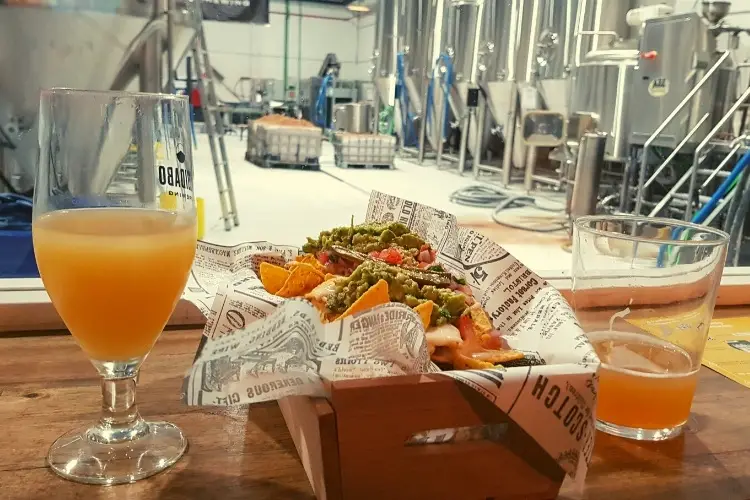
Note :
If you need help with your project, reach out to us at Kissmybrew.com here, and we will help you get set-up. I built two breweries, was the general contractor of the second, and never failed an inspection. I wish all of you the best fortune and shrewd decision-making requisite to this life-altering undertaking.
It is a multi-layered nuanced experience and might make you grey. Even so, damn the torpedoes.
If you are in earnest about starting your own brewing operation, please contact us. We have the skills to get you set up right. Check the Professional Brewing Consulting Services we offer.
